ulimit is a bash builtin. It invokes the setrlimit(2) system call.
That syscall modifies some limit in its -shell- process (likewise the cd builtin calls chdir(2) and modifies the working directory of your shell process).
In a bash shell, $$ expands to the pid of that shell process. So you can use ps $$ (and even compose it, e.g. like in touch /tmp/foo$$ or cat /proc/$$/status)
So the ulimit applies to your shell and stay the same until you do another ulimit command (or until your shell terminates).
The limits of your shell process (and also its working directory) are inherited by every process started by fork(2) from your shell. These processes include those running your commands in that same shell. Notice that changing the limit (or the working directory) of some process don't affect those of the parent process. Notice that execve(2) don't change limits or working directories.
Limits (and working directory) are properties of processes (not of terminals, screens, windows, etc...). Each process has its own : limits and working directory, virtual address space, file descriptor table, etc... You could use proc(5) to query them (try in some shell to run cat /proc/self/limits and cat /proc/$$/maps and ls -l /proc/self/cwd /proc/self/fd/). See also this. Limits (and working directory) are inherited by child process started with fork(2) which has its own copy of them (so limits are not shared, but copied ... by fork).
But if you start another terminal window, it is running another shell process (which has its own limits and working directory).
See also credentials(7). Be sure to understand how fork(2) and execve(2) work, and how your shell uses them (for every command starting a new process, practically most of them).
You mention kill(1) in some comments. Be sure to read its man page (and every man page mentioned here!). Read also kill(2) and signal(7).
A program can call by itself setrlimit(2) (or chdir(2)) but that won't affect the limits (or working directory) of its parent process (often your shell). Of course it would affect future fork-ed child processes of the process running that program.
I recommend reading ALP (a freely downloadable book about Linux programming) which has several chapters explaining all that. You need several books to explain the details.
After ALP, read intro(2), be aware of existing syscalls(2), play with strace(1) and your own programs (writing a small shell is very instructive; or study the code of some existing one), and read perhaps Operating Systems: Three Easy pieces.
NB. The screen(1) utility manages several terminals, each having typically its shell process. I don't know if you refer to that utility. Read also about terminal emulators, and the tty demystified page.
The only way to really kill some screen is with a hammer, like this:

(image of a real hammer hitting a laptop found with Google, then cut with gimp, and put temporarily on my web server; the original URL is probably https://www.istockphoto.com/fr/photo/femme-daffaires-stress%C3%A9-%C3%A0-lordinateur-crash-arrive-et-d%C3%A9truisent-le-moniteur-gm172788693-5836585 and I understand the license permits me to do that.)
Don't do that, you'll be sorry.
Apparently, you are talking of sending a signal (with kill(1) or killall(1) or pkill(1) to some process running the screen(1) program, or to its process group. It is not the same.
